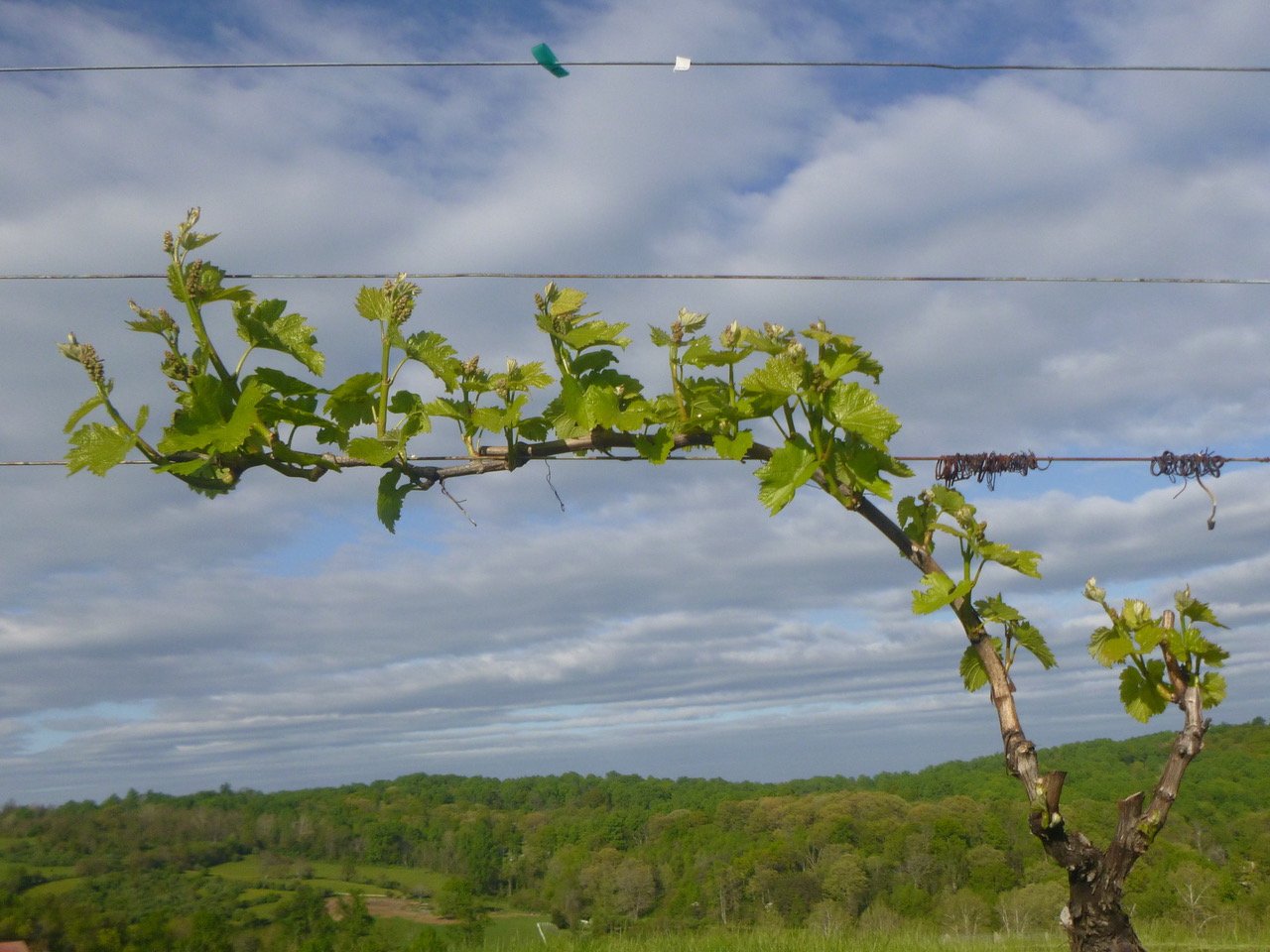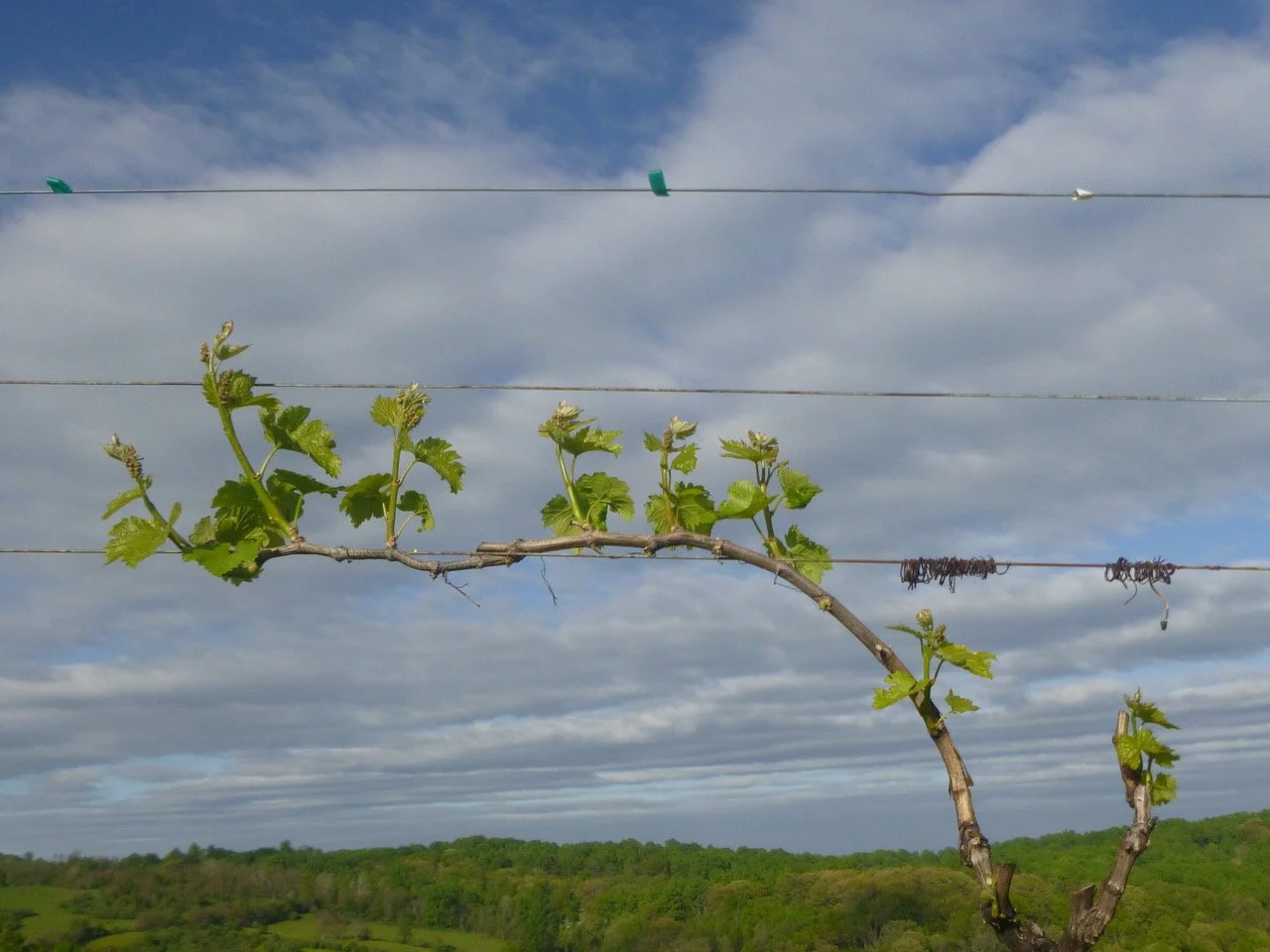Journal | December 27, 2023
Cabernet Franc | Yields
Given a proper amount of sun, nutrients and water grapevines can yield an impressive quantity of grapes. But large yields will dilute the flavors and concentration of the resulting wine. The most prestigious winegrowing regions in France have regulatory bodies that determine the maximum yields allowed. This is one way of ensuring a certain level of quality in order to protect the reputation of the appellation.
Each vintage each vine is able to produce a finite amount of carbohydrates that are turned into sugars, tannins and flavors. The grower decides how this sap is distributed. Cabernet Franc is particularly sensitive to crop loads. If over cropped the red wine will be light in color, thin in body and vegetal in taste.
Fifteen years ago we made the tough decisions to remove Cabernet Franc vines that were planted on inappropriate soils. But before that we learned how to dial in the crop according to wine style. Cabernet Franc vines planted on heavy soils were incapable of producing red wines of interest. These blocks were designated as Rosé blocks. They were cropped heavily and picked early. Color and tannin maturity were not important. Rosés are light bodied and fresh. It worked out well.
Blocks that had soils with some potential, but not ideal were designated as Claret blocks. The yields were moderate: the vines could fully ripen the grapes for red wine, but the wines were part Linden’s fresh, medium bodied Claret blend. Finally, as newer plantings went on ideal soils, crop loads were reduced in order to concentrate the wines and fully ripen tannins. These were candidates for Hardscrabble, Linden’s flagship wine.
How we regulate yields
Winter pruning limits the number of fruitful buds. Each of these buds grows one or two shoots. Each shoot carries one or two clusters. Our goal when pruning is to leave roughly around 8 buds per vine.
In May the shoots appear and grow quickly. Shoot thinning begins once the shoots grow to four inches in length. Excess shoots are removed by hand to an exact number, depending on how severely an individual vine was pruned.
Each shoot has one or two clusters that can range considerably in size depending on the variety, clone and success of pollination. We look at potential cluster size and past records (each vintage we weigh a sampling of clusters) to determine the ideal number of clusters per vine. In July we cluster thin by hand to adjust each vine.
Our final thinning pass is in mid-August once about 90% of the berries have turned black. Those clusters or cluster shoulders that still have lots of green or pink berries will be removed. Cabernet Franc is especially prone to uneven ripening. This is the only time when one can visibly see ripeness variability.
Before shoot thinning.
After shoot thinning.
Before cluster thinning.
After cluster thinning.
Uneven ripening.
Subscribe to Linden Updates for the latest vineyard and cellar information.
Linden Vineyards / Learn More / Latest at Linden | Hardscrabble Journal: December 27, 2023





